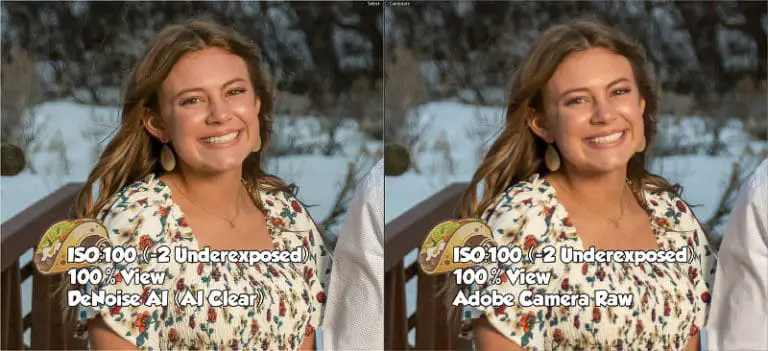

- #Topaz sharpen ai vs denoise ai full size
- #Topaz sharpen ai vs denoise ai software
- #Topaz sharpen ai vs denoise ai iso
- #Topaz sharpen ai vs denoise ai free
The holy grail of noise reduction would be to reduce or eliminate the apparent effects of digital noise whilst having no detrimental effect on detail. Post-production noise reduction tools, especially the modern ones with “AI Technologies” promise to reduce the effects of noise while preserving detail.

Cropping an image also affects the apparent noise because the size of the noise pixels increases when cropping, making them more prominent. If the goal is to have a realistic looking image, noise can be detrimental by shrouding the image in a veil of multi-colored specks that start to obscure detail. When noise becomes more obvious, it starts to become a nuisance.
#Topaz sharpen ai vs denoise ai iso
I’ve found that raising the ISO in camera to achieve proper exposure versus increasing exposure in post achieves more or less the same result in most cases. My experience has been that boosting ISO is generally a means to achieve proper exposure at a given shutter and aperture setting in-camera without resorting to post processing, not as a means to lower noise. By lifting the shadows in post or boosting ISO to achieve proper exposure for a dark scene, one is effectively lifting the baseline amount of noise that is present in the image in addition to pixels expressing the true signal. It is not that the noise necessarily becomes stronger, it is that the signal isn’t strong enough to overcome the underlying noise present in the image. Noise is less obvious when the signal is strong such as a brightly lit scene, however, when photos are taken in low light or with high ISO settings, noise becomes more noticeable. In simple terms, the weaker or noisier the signal, (i.e., quantity and quality of light photons reaching the sensor), the more noise becomes evident in pictures. These can be caused by random emission of photons from light sources, or during the process of converting the analog signal of light hitting the sensor to digital pixels in-camera. Noise is a digital “grain”, or erroneous colors that show up at the pixel level. What is image noise and why would you want to remove it?Įvery camera on the market produces digital noise, and every image taken has some amount of noise.
#Topaz sharpen ai vs denoise ai free
For the “too long, didn’t read” crowd, please feel free to jump straight to the results.
#Topaz sharpen ai vs denoise ai full size
If you are viewing on mobile, I suggest going straight to those full size jpegs to review the images and using pinch to zoom to inspect closely. I have also posted a link to the full-size jpegs for those who might prefer to make their own comparisons.
#Topaz sharpen ai vs denoise ai software
Today I wanted to investigate three different methods of noise reduction for digital photos and answer a question that has been on my mind for a while: how do different post-production noise reduction techniques compare? Do the differences even matter? To do this, I compared the same photo with noise reduction applied using three different software methods: Topaz DeNoise AI, DXO Photolab 4 DeepPRIME, and Lightroom Noise Reduction. Early in my hobby I was quick to throw away images with noise, but with great improvements in noise reduction software technologies, reasonable improvements can be made to even the most noisy images. These issues, coupled with limited budgets with which to buy expensive lenses that fare best in low light conditions can only lead to one thing: noisy images. When photographing wildlife, there are a number of challenges that affect the quality of the final photograph:ġ) the need to shoot in low-light when many wildlife are most active,Ģ) the lack of reach due to far-off subjects or “too short” lenses, which necessitates cropping to get a desirable compositionģ) sometimes subjects are fast moving and dropping the shutter speed to compensate for low light is not an option Unlike working with human subjects or in a studio, wildlife are unpredictable, and rarely are conditions ideal for getting the best quality photo possible.


 0 kommentar(er)
0 kommentar(er)
